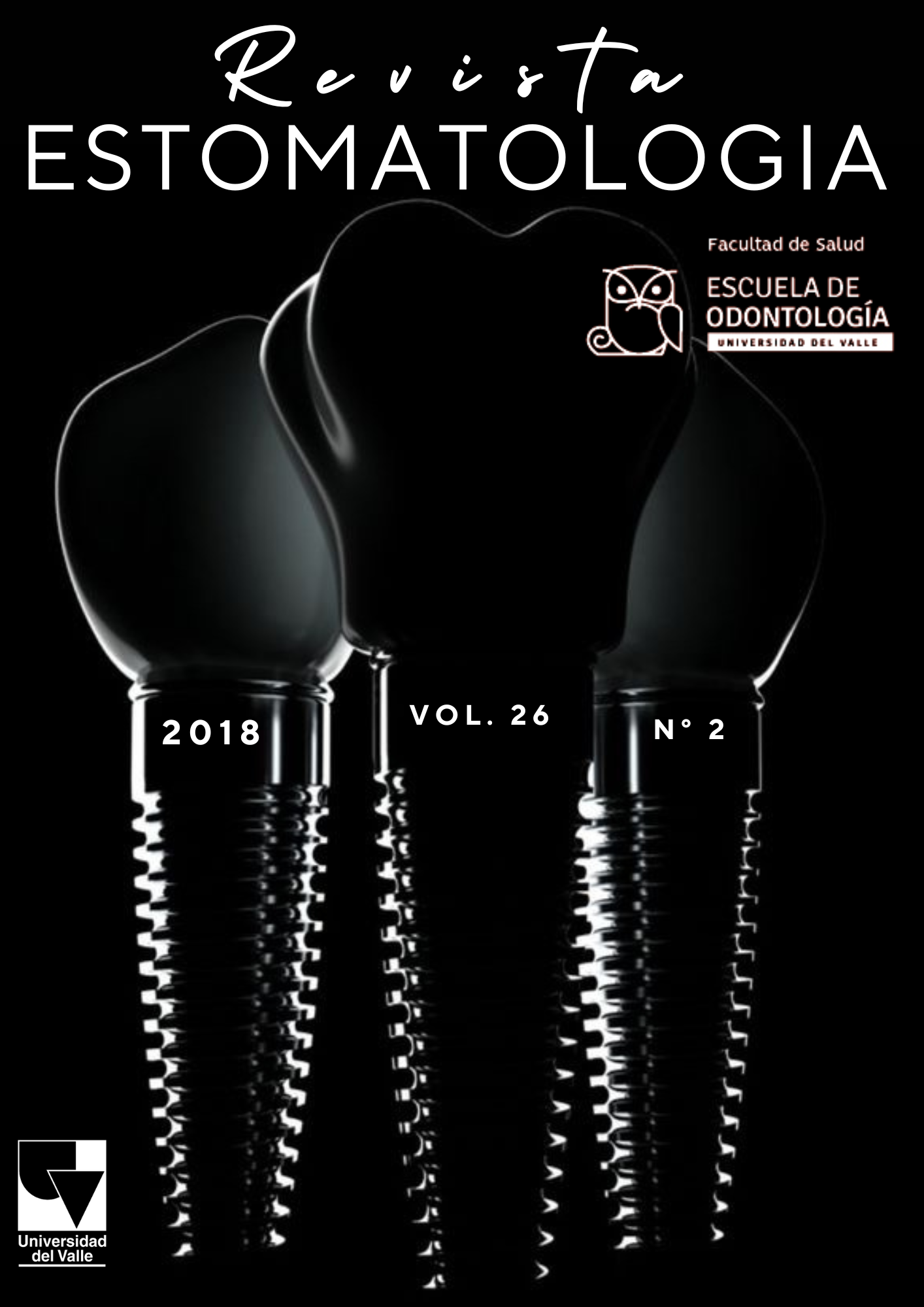Anterior open bite correction with hybrid FLOWJAC® system devices, patient with previous Chin bone resorption. Case report.
Keywords:
Orthodontics, corrective, bone resorption, prostheses and implants, orthodontic appliance designMain Article Content
The orthodontic minitubes system (FLOWJAC ® System, Bogotá, Colombia) is an innovating system that blend the selfligating philosophy techniques and a lowprofile appliance. The FLOWJAC® System works with low orthodontic forces, same as selfligation devices. The system uses heat-treated wires with better physical properties such as hysteresis when is compare with traditional wires. However, the FLOWJAC® technique doesn´t use a wire sequence to get a “working wire”, just a 0,014 Copper NiTi. The clinician in each appointment must modify the minitube location to the clinical desire teeth position. The present report blend FLOWJAC® devices in the upper arch and clear selfligation in the lower arch. The patient treated has mandibular bone resorption due a alloplastic chin augmentation. The root apex from first right premolar to the first left premolar seen to be near to the resorption area using Cone Beam Computer Tomography. That´s the reason why we use a pre-adjust devices in the lower arch, to avoid pulpar and periodontal counter effects. This case was finished with proper functional and aesthetics objectives; such as molar and canine class I, anterior open bite closure with 20% of overbite, coincidence of dental smile arch with lower lip, and without root and pulpar counter effects. The porpoise of this report is to present an orthodontic case with bone resorption on right premolar and incisors area of the mandible. The case was treated with selfligation orthodontics system; FLOWJAC® System in the upper arch and Empower Clear® (American Orthodontics Shebboyiang, USA) in the lower arch and could be done with a precise diagnosis and adequate treatment planning.
2. Kassas W,Thikriat AJ, Preston B, Tabbaa S. Assessment of Invisalign treatment outcomes using the ABO Model Grading System. Journal of the World Federation of Orthodontists. 2013; 2:61-4.
3. Rossini G, Parrini S, Castroflorio T, Deregibus A, Debernardi CL. Efficacy of clear aligners in controlling orthodontic tooth movement: A systematic review. Angle Orthod. 2015; 85:881-9.
4. Bowman SJ. Improving the predictability of clear aligners. Semin Orthod. 2017; 23(1):65-75.
5. Alvear JM. Comparación del movimiento dental obtenido por un arco 0,014 Copper NI-TI® entre dos sistemas : brackets de autoligado y sistema FLOW JAC en tipodontos electrónicos. Odontos. 2011; 1:30-40.
6. Kusy RP, Whitley JQ. Thermal and mechanical characteristics of stainless steel, titanium-molybdenum, and nickel-titanium archwires. Am J Orthod Dentofacial Orthop. 2007;131 (2):229-37.
7. Patel K, Brandstetter K. Solid Implants in Facial Plastic Surgery: Potential Complications and How to Prevent Them. Facial Plast Surg. 2016; 32 (5):520-31.
8. Kuroda S, Sakai Y, Tamamura N, Deguchi T, Takano-Yamamoto Y. Severe Anterior Open-Bite Case Treated Using Titanium Screw Anchorage. Angle Orthod. 2004; 74(4):558-675.
9. Baek MS, Choi YJ, Yu HS, Lee KJ, Kwak J, Park YC. Long-term stability of anterior open-bite treatment by intrusion of maxillary posterior teeth. Am J Orthod Dentofacial Orthop. 2010; 138(4):396e1-e9.
10. Van Dyck C, Dekeyser A, Vantricht E, Manders E, Goeleven A, Fieuws S, et al. The effect of orofacial myofunctional treatment in children with anterior open bite and tongue dysfunction: a pilot study. Eur J Orthod. 2015; 38(3):1-8.
Downloads
Los autores/as conservan los derechos de autor y ceden a la revista el derecho de la primera publicación, con el trabajo registrado con la licencia de atribución de Creative Commons, que permite a terceros utilizar lo publicado siempre que mencionen la autoría del trabajo y a la primera publicación en esta revista.

